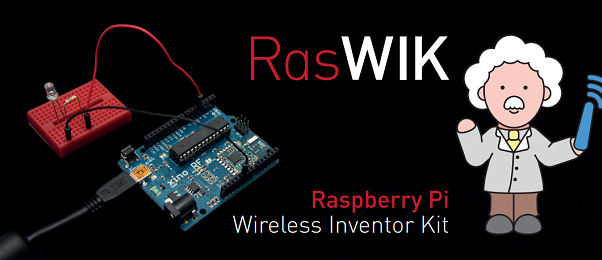
Internet of Things (IoT) manufacturer Ciseco today announced the launch of the Raspberry Pi ‘Wireless Inventors Kit’ (RasWIK).
The 88 piece kit provides everything a Pi owner needs to follow a series of step-by-step projects to create their own wireless devices; without the need for configuration or even writing code.
RasWIK has been designed to be ‘highly accessible’, demystifying the dark art of wireless and enabling anyone with basic computing skills to begin building wireless devices with a Raspberry Pi.
You can create anything from a simple traffic light, to a battery monitor, or even a temperature gauge that sends data to the Xively IoT cloud so billions can access the data.
The Raspberry Pi starter kit is just another step in the open-hardware revolution, which is making electronics available for everyone.
"With RasWIK, our aim is to ignite the inventor in everyday people. It’s literally as simple as picking up a kit, adding in a Pi and getting creative!" said Miles Hodkinson, founder of Ciseco.
"The million plus people who have bought a Pi have highlighted there’s a real appetite for tinkering with electronics. However, many Pis have ended up at the bottom of a drawer because people’s initial ambitions went unrealised.
"RasWIK puts simple tools into the hands of kids, students and tinkerers to get their dreams for their Pi off the ground and start inventing the wireless ideas that will shape the future: the sort of stuff they had hoped they could build in the first place."
Step-by-step guides detail the basics of creating sensor and actuator circuits controlled wirelessly from a Pi; whilst Ciseco’s radio technology and the ground-breaking Lightweight Local Application Protocol (LLAP) makes communicating with remote devices as easy as sending a text message or tweet.
"The basic projects we’ve developed for the RasWIK are designed to give everyday people the initial push and inspire their confidence to start thinking outside the box and give life to ideas that have never been seen before," continued Miles Hodkinson.
"Since the code is all open source, once people understand the basics, they can start modifying it for new applications; developing and even selling their own gadgets based on the kit. The IoT stands a much better chance of moving beyond garage door openers, self-counting egg trays and snazzy looking thermostats if the everyman is at the helm. Innovation from within the industry is really stagnant; some simply don’t realise that it’s customers that are the elusive killer app.
"We hope to see people brewing new ways of improving everyday life and the lives of others; perhaps those with disabilities or those in developing nations; but it’s also incredibly important to make sure people have fun too."






